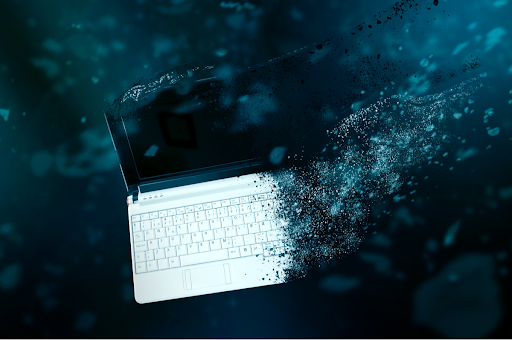How to Incorporate Data Destruction Techniques right into Your Cyber Security Strategy
How to Incorporate Data Destruction Techniques right into Your Cyber Security Strategy
Blog Article
The Importance of Effective Data Devastation Practices in Shielding Sensitive Info and Ensuring Computer System Security
In an age where information violations are progressively common, the value of reliable data damage practices can not be overemphasized. Organizations face significant risks when delicate information is improperly disposed of, possibly resulting in unauthorized gain access to and serious financial consequences. Applying robust data destruction approaches not only reduces these risks but additionally lines up with legal conformity demands, making sure that organizations copyright their online reputation and foster customer trust. The question remains: what particular methods can be utilized to boost these techniques, and how can organizations successfully incorporate them right into their total cybersecurity framework?
Understanding Information Destruction
Comprehending data damage is important in today's digital landscape, where sensitive details can easily be jeopardized. Efficient data damage includes not just erasing documents but guaranteeing that information is irretrievable with extensive methods. This procedure is necessary for companies that take care of personal customer information, copyright, or internal documents, as any kind of violation can bring about serious economic and reputational consequences.
Data destruction includes numerous strategies, consisting of shredding physical media, degaussing magnetic storage devices, and employing software-based services that overwrite data several times. Each approach offers a particular function and has to align with the level of sensitivity of the details being dealt with. For instance, physical devastation is frequently liked for hard drives including highly personal information, while software application approaches may be sufficient for less sensitive information.
Furthermore, sticking to sector standards and guidelines, such as the General Information Protection Policy (GDPR) or the Medical Insurance Mobility and Liability Act (HIPAA), is crucial for compliance and to alleviate lawful dangers. Organizations must develop a robust information devastation policy, train employees on ideal techniques, and regularly examine their procedures to make sure that all sensitive info is dealt with safely and effectively.
Dangers of Inadequate Practices
Poor information destruction practices subject companies to substantial risks that can have far-reaching effects. When delicate information is not correctly disposed of, it remains prone to unapproved access, which can cause information violations and identity theft. Such events not only jeopardize the safety of people but also tarnish the organization's track record, leading to a loss of consumer trust fund and possible economic effects.
In addition, governing conformity is significantly rigorous in many industries. Failure to stick to data destruction policies can lead to hefty fines and legal activities against organizations. These penalties can divert and strain economic sources interest from core business operations.
Additionally, the misuse of residual data can cause copyright burglary or company espionage, jeopardizing competitive advantages (data destruction). The impact of inadequate information damage extends past instant financial losses; it can additionally lead to long-term damages to brand name integrity and market position

Organizations have to acknowledge that data safety and security is not entirely about protecting against violations; it likewise includes the accountable monitoring of information throughout its lifecycle. Neglecting effective data damage protocols can have catastrophic implications, highlighting the necessity for robust steps to mitigate these risks.
Finest Practices for Data Damage
Applying effective data damage techniques is necessary for safeguarding sensitive details and preserving conformity with regulatory requirements. Organizations should embrace a multi-faceted approach to ensure that information is irretrievable, thereby preventing unapproved gain access to and potential violations.
First, data should be classified based upon sensitivity, permitting organizations to apply ideal damage methods customized to the level of threat. For digital data, utilizing software-based data-wiping devices that abide by market criteria can successfully overwrite existing information. Physical damage methods, such as shredding or degaussing, are critical for devices that keep delicate details, guaranteeing total obliteration.
Establishing a clear information retention plan is crucial, detailing how long various kinds of details ought to be retained before destruction. Routine audits of information storage space systems are also essential to recognize out-of-date or unnecessary data requiring elimination.
Additionally, training staff members on the importance of data destruction and the specific procedures to follow fosters a society of security within the organization. Preserving documents of data devastation refines offers responsibility and sustains compliance with interior policies and outside regulations. By adhering to these ideal methods, companies can substantially reduce the threats related to data direct exposure.
Legal and Compliance Factors To Consider

Failure to adhere to these guidelines can cause extreme penalties, including considerable penalties and reputational damages. Organizations should execute a durable information devastation policy that aligns with these legal frameworks and supplies clear guidelines on the appropriate approaches of information disposal, whether physical shredding or electronic cleaning.
Additionally, keeping documentation of data damage activities is crucial for showing compliance during audits or examinations. By prioritizing legal and conformity factors to consider, organizations can improve their data safety and security pose and foster trust fund with customers and stakeholders, inevitably adding to a more safe information monitoring environment.
Benefits of Effective Information Damage
Efficient information damage techniques expand past mere compliance; they offer significant benefits to companies that prioritize them. By making certain that delicate info is irretrievably damaged, companies reduce the threat of information breaches and the possible economic consequences associated with them. This aggressive technique not only safeguards versus unauthorized gain access to however likewise enhances the total reliability of the organization in the eyes of clients and stakeholders.
Applying durable data destruction methods, such as physical damage of storage gadgets or innovative data cleaning techniques, adds to the fortifying of an organization's cybersecurity position. data destruction. It reduces the likelihood of copyright theft and shields exclusive details, consequently keeping a competitive edge in the market

Conclusion
To conclude, reliable information destruction techniques are necessary for protecting sensitive info and enhancing overall computer system safety. By executing comprehensive techniques such as software application, shredding, and degaussing overwriting, companies can reduce the threats connected with unapproved gain access to and data violations. Adherence to regulatory requirements, including GDPR and HIPAA, more strengthens compliance and shields against legal effects. Ultimately, a commitment to durable data devastation techniques cultivates a culture of great site duty, thus enhancing a company's cybersecurity pose and preserving customer trust fund.

Report this page